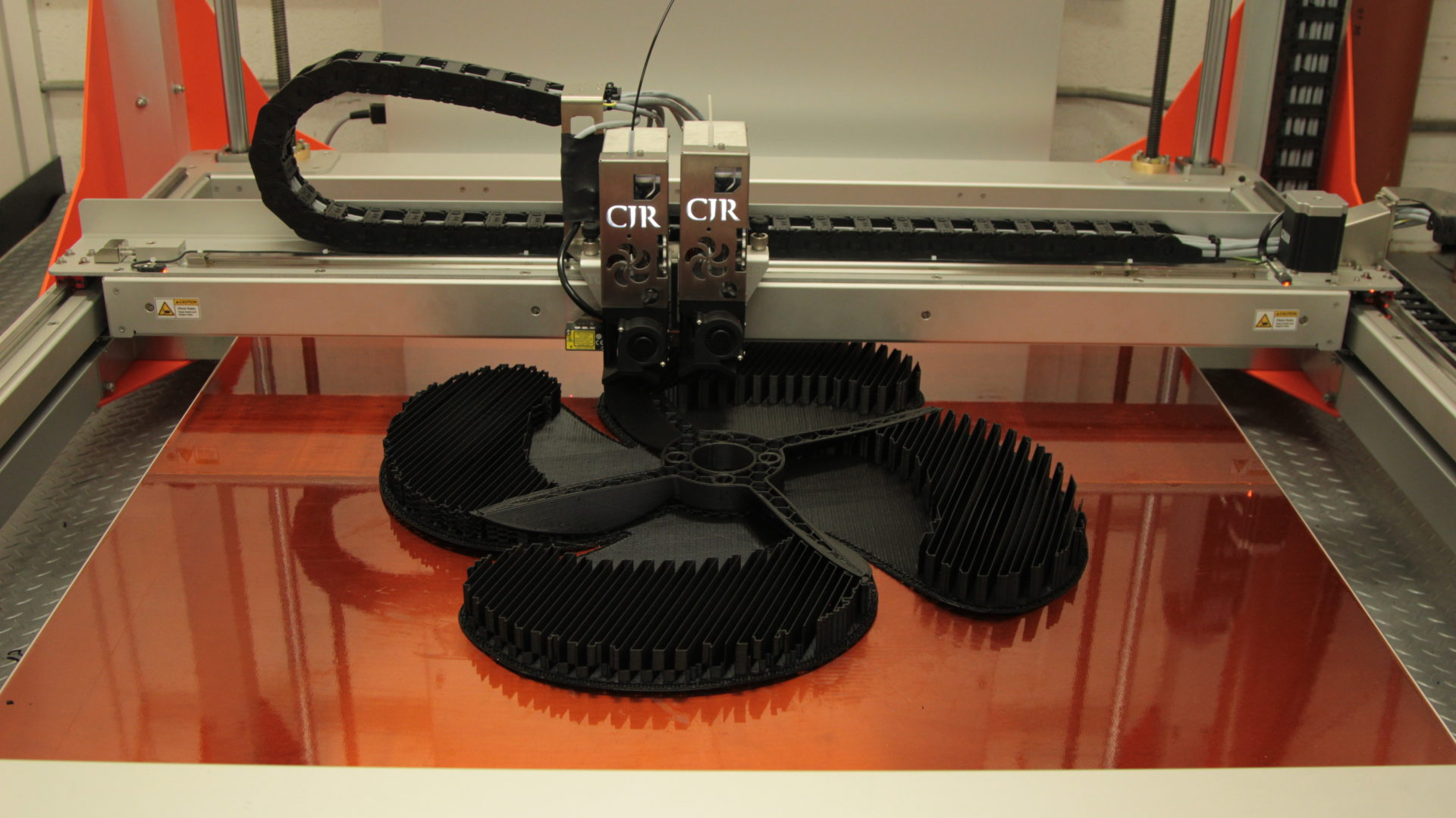CJR recently installed its latest in prototyping tools with the arrival of one of the largest 3D printers in commercial use in the UK. Simon Lewis, CJR’s Head of CFD and Propeller Design, explained a little about why it is so exciting and the difference it will make to design and production.
Can you tell us a little about the printer?
The first thing to say is that it’s really big. It has a print area larger than one metre so it is a step change in terms of type of products we can use it for and the speed of prototyping. Previously, we had to print in sections and then join those sections together, even on smaller props, and that adds a lot of time and cost. With the new system, we can print most projects in a single set-up and even the largest projects can be produced in fewer sections, much quicker and cheaper than before.
What was the main goal for investing in this new piece of technology?
It is part of our long-term strategy to bring every aspect of our operation entirely in-house. Previously, we were outsourcing some prototyping of new propeller and stern gear designs. This was creating a delay in the production process and incurring additional costs for creating complex patterns. Having the new 3D printer removes all that. It gives us a huge amount of flexibility in producing exactly what we want, and that greatly reduces costs and the time from design to finished product.
Were there any particular reasons for choosing this particular model?
We have done a fair amount of engineering work since it arrived to match its functionality to our requirements, but initially, we chose this model because it had one of the largest build areas and good build quality. Perhaps more importantly though are its eco credentials. Instead of using petro-based plastics, this 3D printer uses polylactic acid or PLA, which is non-toxic and made using entirely renewable materials such as sugarcane, wheat, or potatoes – whichever is the most abundant locally. As a result, we are not consuming fossil fuels and have zero impact on the environment. We are even able to compost all the support and waste materials!
Where do you think 3D printing will go in the future?
Looking at what is realistically on the horizon, I think the possibility of printing in metal is really exciting. It is already possible, but it’s prohibitively expensive at the moment. It will get cheaper, speeds will increase and flexibility in terms of materials will also improve but knowing when it will be commercially viable is hard to predict. It’s a fast‐moving industry because it’s so young and is still identifying where it can have the biggest impact, but if we can get to the stage where products can be perfectly and cost-effectively produced in multiple materials – that’s when things will really heat up.
